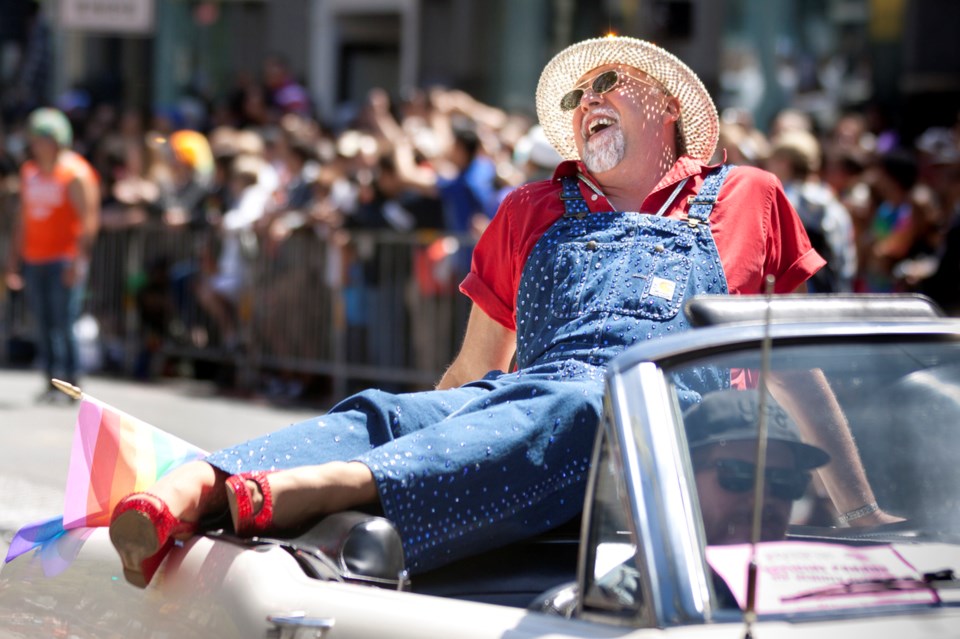In 1978, the American artist and gay rights activist Gilbert Baker designed the rainbow flag to reflect the diversity of LGBTQ+ communities. While today’s pride flag has six colours, the original had eight – hot pink for sex, red for life, orange for healing, yellow for sunlight, green for nature, turquoise for magic/art, indigo for serenity, and violet for spirit.
To commemorate the 25th anniversary of the 1969 Stonewall Riot in 1994, Baker created a mile long Rainbow Flag which required 5,000 people to carry. Another 25th anniversary – the anniversary of the Rainbow Flag – prompted Baker to create another flag, this one reaching from the Atlantic Ocean in Key West to the Gulf of Mexico. This flag was later split into sections and sent to over 100 cities around the world. One segment of this flag now resides in Vancouver with the Vancouver Pride Society. The flag is brought to various Pride events, and is loaned to other regional Pride events around the province.
Baker refused to trademark the flag, considering it to belong collectively to the community and saying that “flags are torn from the soul of the people.” Since he first created the Pride flag, many communities have created their own Pride flags, such as Leather Pride, Bisexual Pride, Trans Pride, Ace Pride, and many more. Most recently, in June 2017, Philadelphia added a black and a brown stripe to symbolize people of colour. People have been creating flags which express their communities, creating beautiful, political and poignant symbols which speak to their souls.
Baker passed away earlier this year on March 31 at the age of 65. We remember his legacy.
Find out more about Gilbert Baker’s life and work at gilbertbaker.com.


